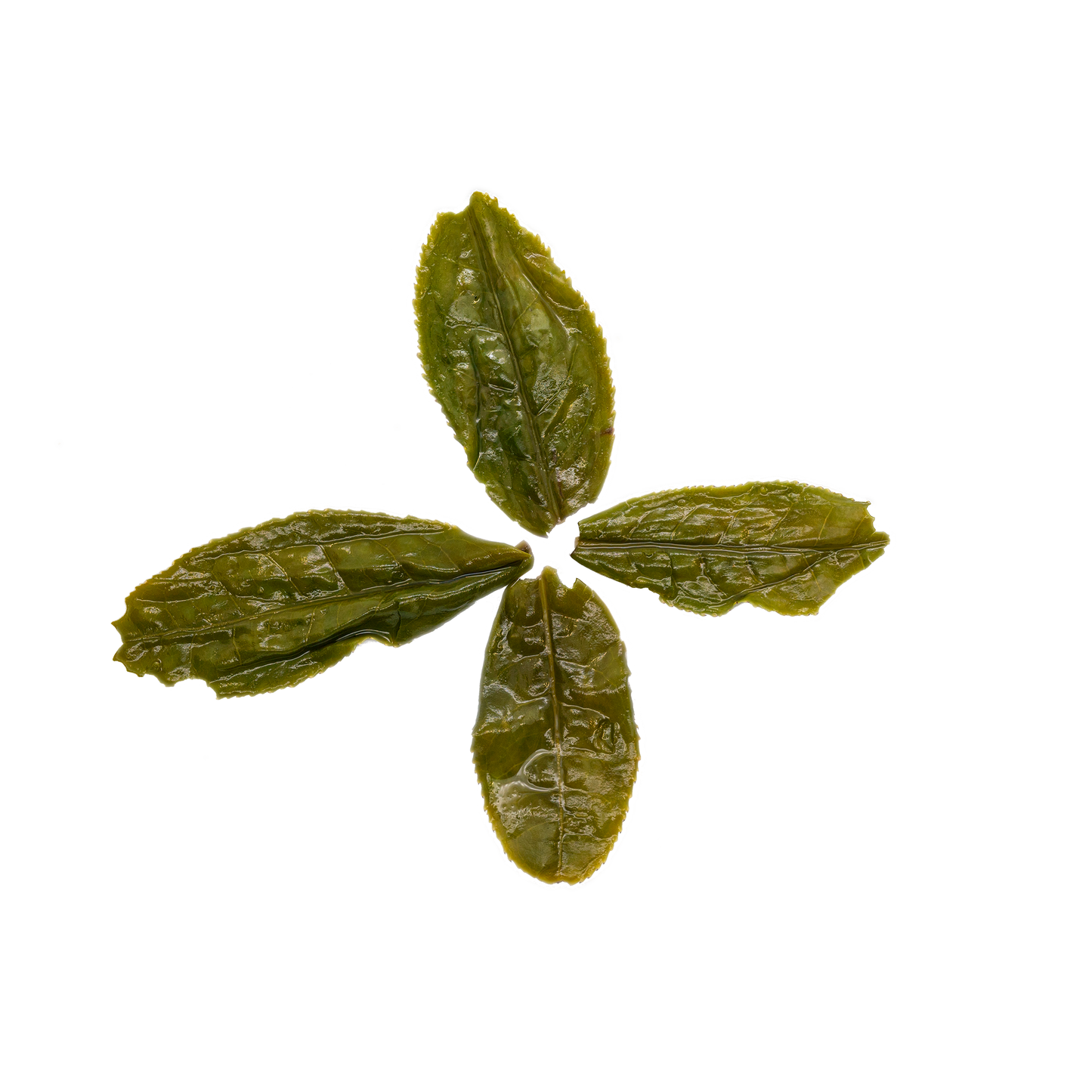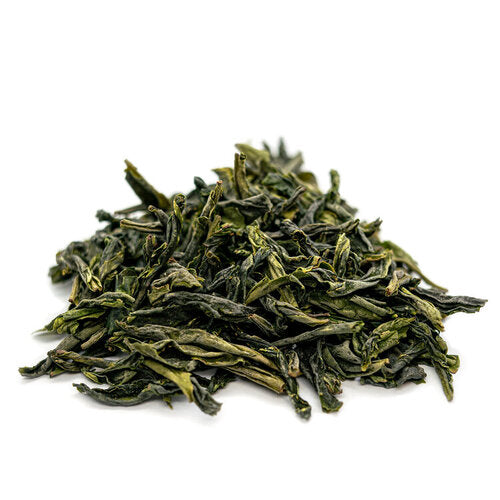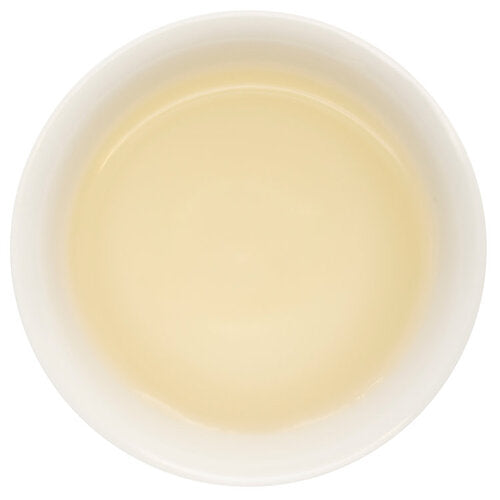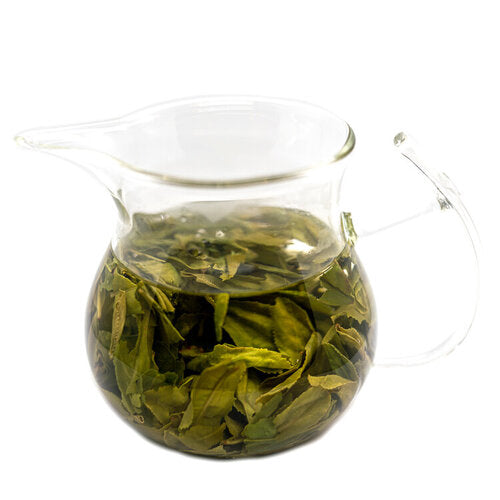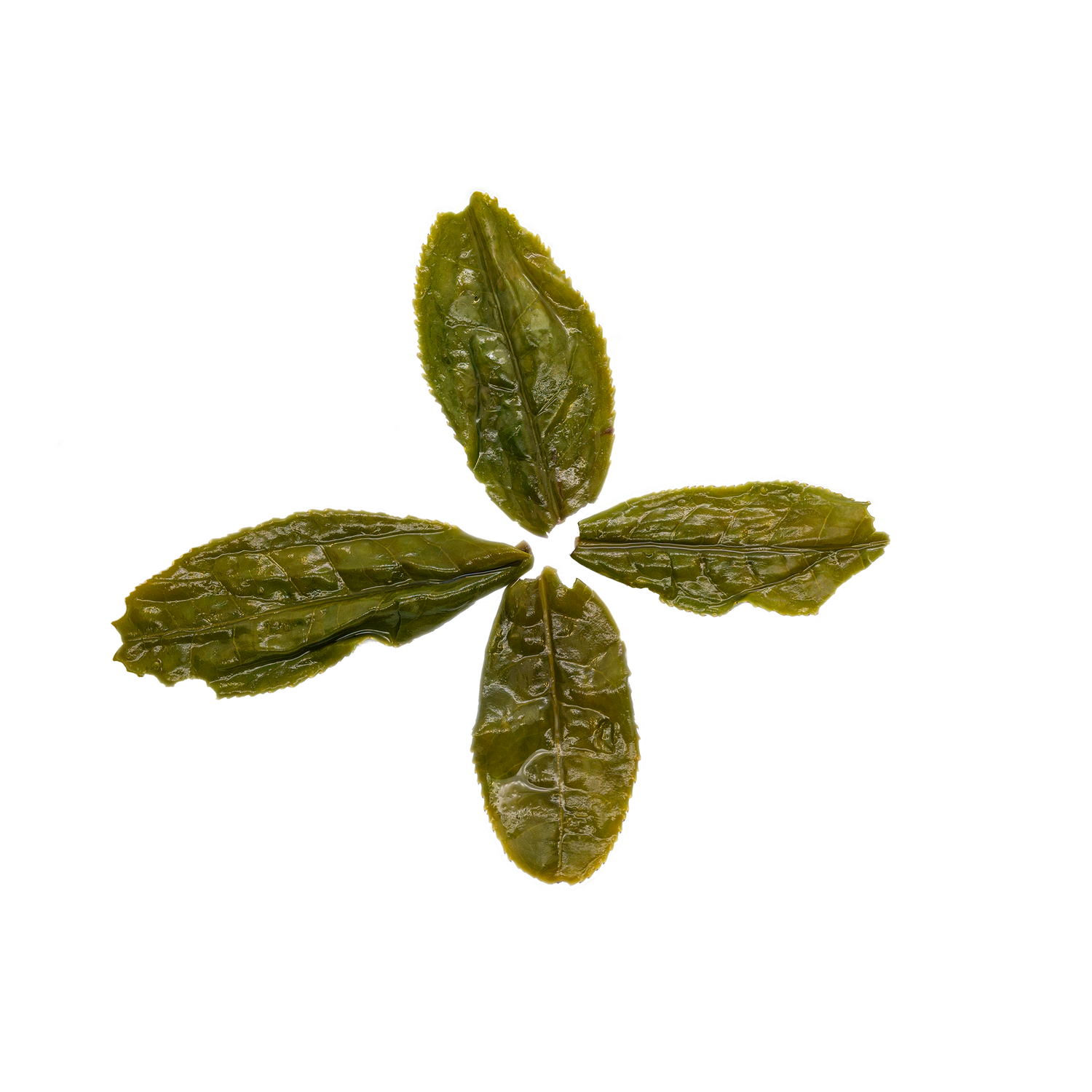Gua Pian is the only Chinese green tea made using only leaves, no buds or stems. The comprehensive profile of umami, grassy, floral, and its gentle sweetness remind us of a combination of matcha and gyokuro. Our Gua Pian is from heirloom trees in Lu An, one of the oldest tea-making regions in China with over 1000 years of tea-making history. Still, Gua Pian has existed for around 100 years, making it reasonably young by tea variety standards.
Lu An tea has taken many shapes and forms throughout history, but it reached its height when, during the Qing Dynasty, this tea evolved into the sunflower-seed shape we now know as Gua Pian and obtained the Tribute Tea status. Gua Pian is one of China’s Ten Famous Teas, which is an official status in China. Lu An also has a historical, but “peasant” style tea called Lan Cha or An Cha, and like Pu Er, tea lovers are being rediscovered in China. Gua Pian is frequently mistranslated as “Melon Seed,” because as individual words, Gua means “melon” and Pian means “seed.” Still, in Chinese, the two terms refer to the sunflower seed, not the melon seed. Therefore, this name, “Sunflower Seed,” is most likely a reference to the shape of the freshly picked leaves. Because of the region’s long history, the proper origin area for Gua Pian is more significant than that of most historically famous teas. Although, like any historical terroir, the division of the Gua Pian producing region is strict and precise, it is divided into the Inner Mountain and Outer Mountain areas. The Outer Mountain consists of a northeastern district within five kilometers of Yu An and Shi Po Dian, closer to Lu An. The Inner Mountain (known for better tea) is deeper into the Da Bie Mountain Range, including Xiang Hong Dian and Xian Hua Ling, with Qi Shan crowned the best of them all. Once a significant trading hub known as Ma Bu was within Lu An. However, it was flooded to create a reservoir, making Qi Shan now a half-island accessible by boat from Xian Hua Ling, the central trading hub in the region today. This portion of the trip makes it one of the most tedious to reach but stunningly beautiful tea regions because the ferry only runs once a day and with no set departure time. Interestingly, Huo Shan, an area known for growing the yellow tea Huang Ya, is also part of the greater Lu An area.
Qi Shan, part of the Da Bie mountain range, is the top terroir for Gua Pian. Like many historical tea villages, Qi Shan is both the collective name for dozens of natural villages and the name of the natural village with the best of the best Gua Pian. According to legend, there’s a bat cave near the peak of Qi Shan, where the Divine gifted the first tea tree in the area.
Gua Pian is umami, buttery, and creamy with a soft sugary undertone. This complex tea offers dynamic possibilities with varied brewing methods. When shaken vigorously, the tea will foam up and yield a super creamy texture. The comprehensive profile of umami, grassy, floral, and gentle sweetness reminds us of a combination of matcha and gyokuro.
Gua Pian woks are wood-fired and usually in a standup position with two or three line up in a row. Without a dial to control the temperature, one person has to be assigned to operate the log fire, controlling the temperature completely by skillfully positioning the logs and knowing when to add or take out a few. The two or three woks are usually operating at different temperatures, with the first one the hottest. Once the leaves are thoroughly cooked (enzymes killed), they are transferred to the next wok(s) to take shape. The tea makers use a small broom or swatter-looking tool to move the leaves, then gently beat it continuously to make sure the leaves are heated evenly and take on the signature tightening shape, making about half an ounce of tea at a time. The leaves then are transferred to a slightly warped bamboo tray and moved nimbly over dim charcoal ash to slowly bake dry. After the teas are baked dry comes the most tedious step of all top-shelf Chinese teas, where one by one, the older leaves and stems are picked out from the batch. Then a unique action of Gua Pian is performed, La Da Huo, or pulling the big fire.
Twenty pounds at a time, the semi-dried leaves are put on a giant bamboo tray with one man on each side of it, and walk the tea over a big sizzling pit of charcoal fire to flash roast the teas. For each batch of tea, this step is repeated for about an hour. It is usually done on a three-person rotation as the locals say no man can handle more than five rounds of the roasting a day. The tea leaves lose about 30% more moisture after this step, leaving us with only around fourteen pounds of the final tea. Indigenous varietals of Gua Pian are affectionately referred to as Ben Cha (“stupid tea”) among locals. They bud much later than clone varietals, to the point that the different varietal groups practically have two separate picking seasons. The most common clone varietal used for Gua Pian is Wu Niu Zao, and this is the varietal most commonly found on the market. Though both are produced in the true origin of Gua Pian, tea made from the heirloom Ben Cha varietals offers the most authentic taste of this historically famous tea.
